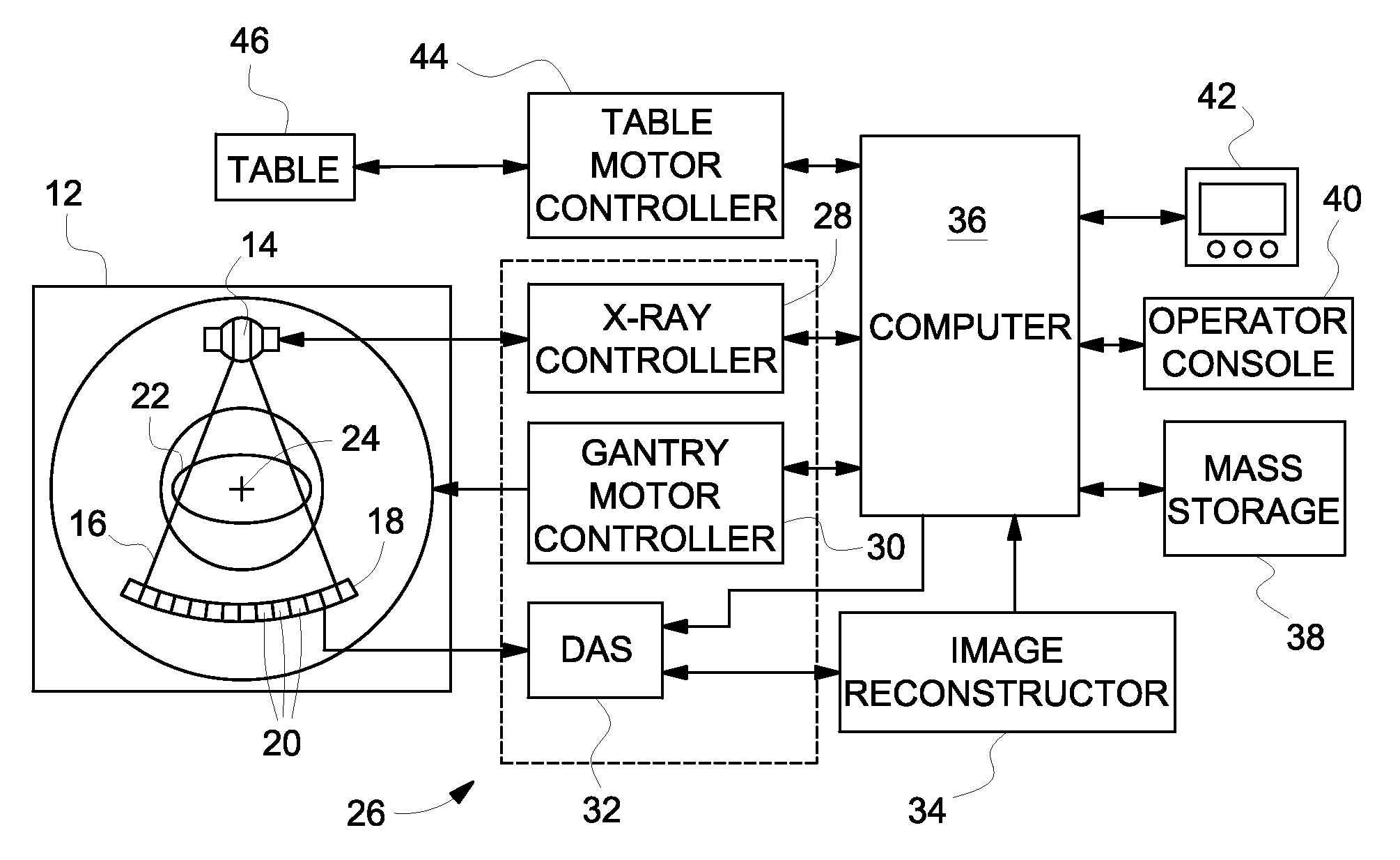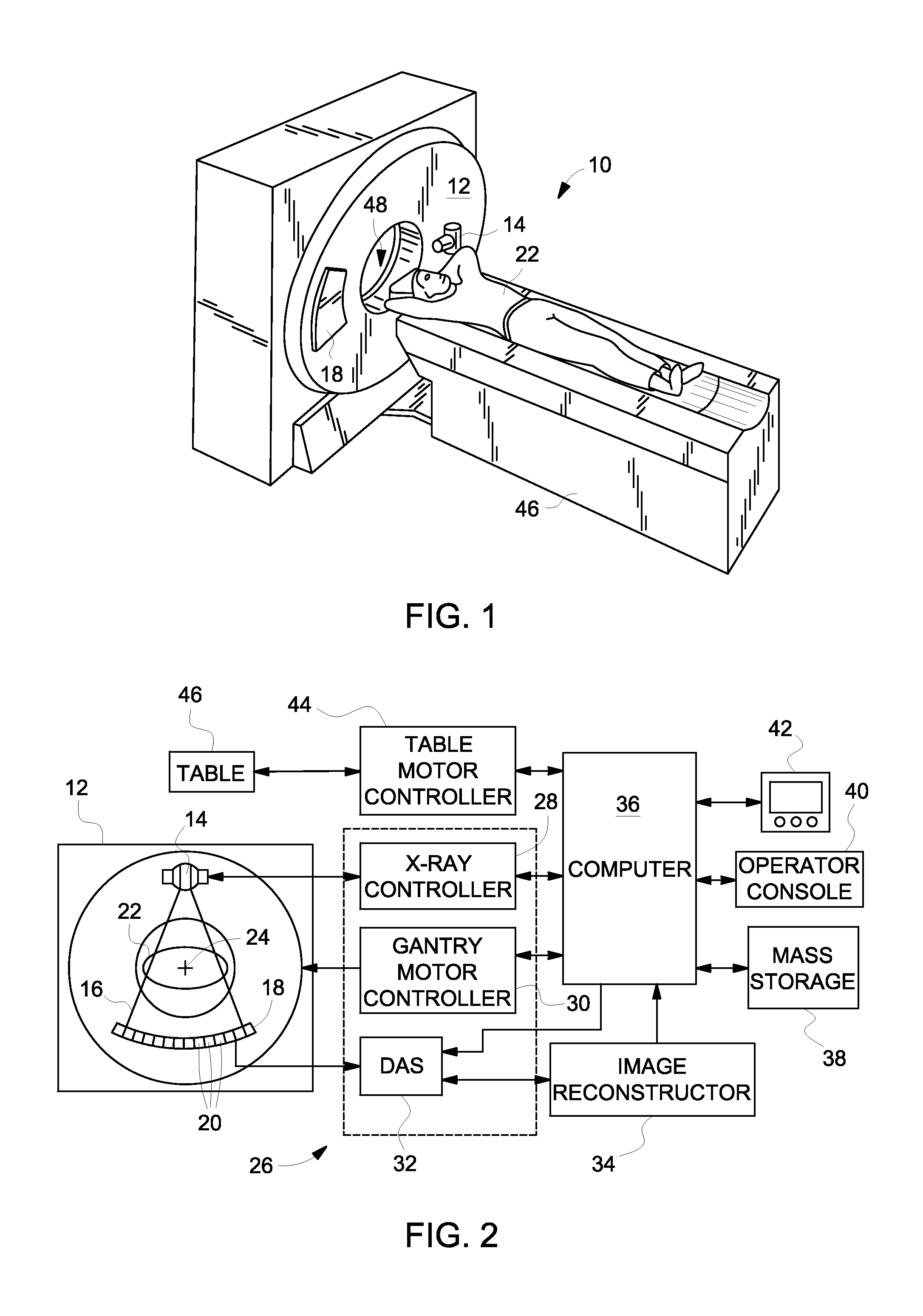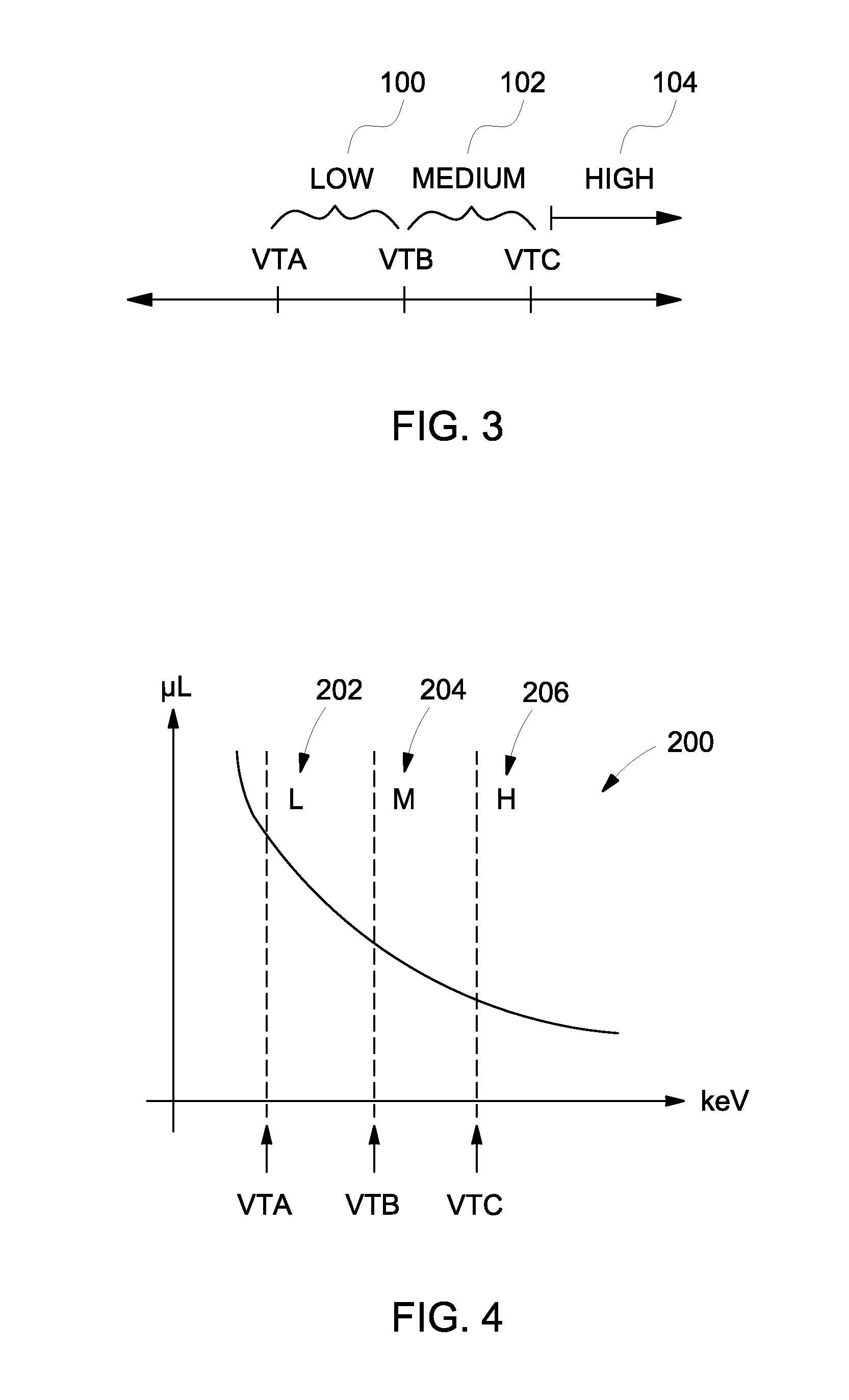Photon counting and energy discriminating detector threshold calibration
a detector and threshold technology, applied in the field of photon counting and energy discrimination detector threshold calibration, can solve the problems of not being able to distinguish energy levels of photons, not providing an energy discrimination capability, and systems with k-edge contrast materials and/or agents that do not fit into the conventional bmd model, and conventional bmd cannot account for the k-edge effect of high z or high atomic number materials such as iodine (i)
- Summary
- Abstract
- Description
- Claims
- Application Information
AI Technical Summary
Benefits of technology
Problems solved by technology
Method used
Image
Examples
Embodiment Construction
[0027]Diagnostics devices typically comprise x-ray systems, magnetic resonance (MR) systems, ultrasound systems, computed tomography (CT) systems, positron emission tomography (PET) systems, single-photon-emission computed tomography systems (SPECT), and other types of imaging systems. Applications of x-ray sources comprise imaging, medical, security, industrial inspection applications, and portable radiation detectors. The operating environment described herein includes a 64-slice CT system. However, it will be appreciated by those skilled in the art that an implementation of the embodiments described herein is also applicable for use with single-slice or other multi-slice configurations. More generally, an implementation is employable for detection and conversion of x-rays. However, one skilled in the art will further appreciate that an implementation is employable for the detection and conversion of other high frequency electromagnetic energy, high frequency polychromatic electro...
PUM
| Property | Measurement | Unit |
|---|---|---|
| photon energies | aaaaa | aaaaa |
| threshold | aaaaa | aaaaa |
| noise variance | aaaaa | aaaaa |
Abstract
Description
Claims
Application Information
 Login to View More
Login to View More - R&D
- Intellectual Property
- Life Sciences
- Materials
- Tech Scout
- Unparalleled Data Quality
- Higher Quality Content
- 60% Fewer Hallucinations
Browse by: Latest US Patents, China's latest patents, Technical Efficacy Thesaurus, Application Domain, Technology Topic, Popular Technical Reports.
© 2025 PatSnap. All rights reserved.Legal|Privacy policy|Modern Slavery Act Transparency Statement|Sitemap|About US| Contact US: help@patsnap.com



